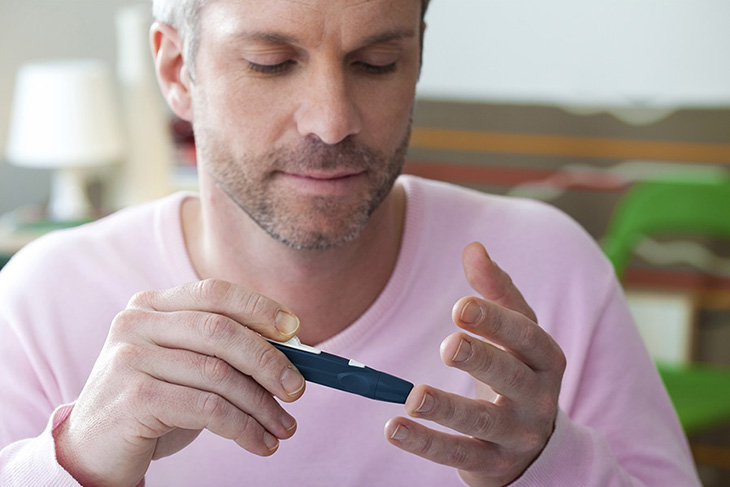How do you know if you’re pre-diabetic?

Two million Australians have pre-diabetes and are at high risk of developing type 2 diabetes, but there is plenty you can do to turn your health around. So how do you know you’ve got it?
According to Professor Jennie Brand-Miller at the Glycemic Index Foundation (GIF), the short answer is you won’t. People with pre-diabetes experience blood glucose levels that are higher than normal, but it doesn't come with any obvious symptoms.
However, this doesn’t mean there's nothing to look out for or that nothing can be done about it.
Risk factors
“There are a number of risk factors for pre-diabetes, so those at risk can request a blood glucose test which will show if their levels are elevated. Making lifestyle changes to reduce these risk factors can then help ward off type 2 diabetes," says Brand-Miller.
Pre-diabetes and type 2 diabetes lifestyle risk factors include:
- Being overweight – especially if you’re carrying excess weight around the midsection. This is something you can check yourself: a waist circumference over 80 cm for women or 94 cm for men is a risk factor for type 2 diabetes.
- A sedentary lifestyle.
- High total cholesterol levels.
- High blood pressure.
- Smoking.
Other risk factors include:
- Family history of type 2 diabetes or heart disease.
- Being of Aboriginal or Torres Strait Islander descent.
- Having Polycystic Ovarian Syndrome.
- A history of gestational diabetes during pregnancy.
If you have any of the risk factors, ask your GP about a blood glucose test, which will show if your numbers are higher than normal. From here, they may recommend additional testing to see if there is a potential issue.
CSIRO Total Wellbeing Diet meal plans have been designed to help you lose weight and get all the nutrients you need for optimal health and wellbeing. Learn more about the Special Edition for Pre-diabetes and Type 2 Diabetes program.
Why does it matter?
As well as an increased risk of developing type 2 diabetes, being pre-diabetic increases your risk of cardiovascular (heart and circulation) disease. Diabetes Australia report without making the necessary lifestyle changes, one in three people with pre-diabetes will go on to develop type 2 diabetes.
The good news? They also suggest that there's strong evidence that type 2 diabetes can be prevented in up to 58 percent of cases in the high risk (pre-diabetes) population by eating well, exercising and losing excess weight.
How the CSIRO Total Wellbeing Diet can help
The CSIRO Total Wellbeing Diet is an online weight loss program that incorporates low GI foods (which steady your blood glucose) into the meal plans. The easy and delicious recipes mean you can eat with the rest of the family, and not have to shop for ‘special’ ingredients. You can also make every day favourites healthier simply by swapping to low GI alternatives (think swapping your daily spuds for a low GI Carisma or sweet potato, or choosing wholegrain over white bread.)
“There is significant evidence that low GI diets not only decrease the risk of developing type 2 diabetes, but also assist in improving the management of diabetes,” Brand-Miller says.
She says low GI diets have been shown to:
- Improve blood glucose levels by reducing blood glucose spikes.
- Lower insulin levels, which makes fat easier to burn and less likely to be stored.
- Reduce insulin resistance.
- Improve markers of average blood glucose levels.
- Improve blood cholesterol levels, particularly LDL cholesterol.
- Increase feelings of fullness after eating and reduce hunger between meals.
- Increase the rate of weight loss and reduce waist circumference.
- Help prevent weight regain over the longer term.
The CSIRO Total Wellbeing Diet takes the guess work out of figuring out which foods are low GI and provides a range of healthy and delicious recipes and meal plans. You can also easily identify low GI foods by looking out for the “Low GI” symbol on food packaging, or you can look them up on the GI database.
Looking for weight loss motivation, dinner inspiration or exercise ideas? Check out the CSIRO Total Wellbeing Diet blog or take a look at some of our delicious, healthy recipes.
